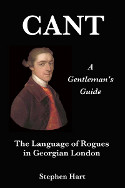WILLIAM SHAW
Executed in 1721 for "Murdering" his Daughter, who, it was afterwards proved, committed Suicide
WILLIAM SHAW was an upholsterer at Edinburgh in the year 1721. He had a daughter, Catherine Shaw, who lived with him. She encouraged the addresses of John Lawson, a jeweller, to whom William Shaw declared the most insuperable objections, alleging him to be a profligate young man, addicted to every kind of dissipation. He was forbidden the house; but the daughter continuing to see him clandestinely, the father, on the discovery, kept her strictly confined. William Shaw had for some time pressed his daughter to receive the addresses of a son of Alexander Robertson, a friend and neighbour; and one evening, he being very urgent with her thereon, she peremptorily refused, declaring she preferred death to being young Robertson's wife.
The father grew enraged and the daughter more positive; so that the most passionate expressions arose on both sides, and the words "barbarity, cruelty and death" were frequently pronounced by the daughter. At length he left her, locking the door after him. The greatest part of the buildings at Edinburgh were formed on the plan of the chambers in our inns of court; so that many families inhabited rooms on the same floor, having all one common staircase. William Shaw dwelt in one of these, and only a single partition divided his apartment from that of James Morrison, a watch-case maker.
This man had indistinctly overheard the conversation and quarrel between Catherine Shaw and her father, but was particularly struck with the repetition of the above words, she having pronounced them loudly and emphatically. For some little time after the father had gone out all was silent, but presently Morrison heard several groans from the daughter.
Alarmed, he ran to some of his neighbours under the same roof. These, entering Morrison's room and listening attentively, not only heard the groans, but distinctly heard Catherine Shaw two or three times faintly exclaim: "Cruel father, thou art the cause of my death!" Struck with this, they flew to the door of Shaw's apartment; they knocked -- no answer was given. The knocking was still repeated -- still no answer.
Suspicions had before arisen against the father; they were now confirmed. A constable was procured, an entrance forced. Catherine was found weltering in her blood, and the fatal knife by her side. She was alive, but speechless; but on questioning her as to owing her death to her father she was just able to make a motion with her head, apparently in the affirmative, and expired.
Just at the critical moment William Shaw returned and entered the room. All eyes were on him. He saw his neighbours and a constable in his apartment, and seemed much disordered thereat; but at the sight of his daughter he turned pale, trembled, and was ready to sink. The first surprise, and the succeeding horror, left little doubt of his guilt in the breasts of the beholders; and even that little was done away with on the constable discovering that the shirt of William Shaw was bloody.
He was instantly hurried before a magistrate, and, upon the depositions of all the parties, committed to prison on suspicion. He was shortly after brought to trial, when, in his defence, he acknowledged having confined his daughter to prevent her intercourse with Lawson; that he had frequently insisted on her marrying Robertson; and that he had quarrelled with her on the subject the evening she was found murdered, as the witness Morrison had deposed: but he averred that he left his daughter unharmed and untouched, and that the blood found upon his shirt was there in consequence of his having bled himself some days before and the bandage becoming untied.
These assertions did not weigh with the jury, when opposed to the strong circumstantial evidence of the daughter's expressions of "barbarity, cruelty, death," and of "Cruel father, thou art the cause of my death" -- together with that apparently affirmative motion with her head, and of the blood so seemingly providentially discovered on the father's shirt. On these several concurring circumstances was William Shaw found guilty and executed, and was hanged in chains, at Leith Walk, in November, 1721.
In August, 1722, as a man who had become the possessor of the late William Shaw's apartment was rummaging by chance in the chamber where Catherine Shaw died, he accidentally perceived a paper which had fallen into a cavity on one side of the chimney. It was folded as a letter, which, on being opened, contained the following:-
BARBAROUS FATHER, -- Your cruelty in having put it out of my power ever to join my fate to that of the only man I could love, and tyrannically insisting upon my marrying one whom I always hated, has made me form a resolution to put an end to an existence which is become a burthen to me. I doubt not I shall find mercy in another world; for sure no benevolent being can require that I should any longer live in torment to myself in this! My death I lay to your charge: when you read this, consider yourself as the inhuman wretch that plunged the murderous knife into the bosom of the unhappy CATHERINE SHAW.
This letter being shown, the handwriting was recognised and avowed to be Catherine Shaw's by many of her relations and friends. The magistracy of Edinburgh, on a scrutiny, being convinced of its authenticity, they ordered the body of William Shaw to be taken from the gibbet and given to his family for interment; and as the only reparation to his memory and the honour of his surviving relations they caused a pair of colours to be waved over his grave in token of his innocence.

